Ah, the age-old question that haunts many shrimp keepers: Can I keep Kuhli Loach and shrimp together in the same tank? Picture this, shrimpfam: You’ve just set up a beautiful aquarium with lush plants and vibrant shrimp. You’re considering adding Kuhli Loach to the mix, but a nagging doubt creeps in. Will the Kuhli Loach get along with your beloved shrimp?
Yes, Kuhli Loach and shrimp can be kept together, provided the right conditions and care are maintained but be warned Kuhli loaches will eat baby shrimp.
I remember the first time I faced this dilemma. Decades ago, I had just introduced Kuhli Loach into my shrimp tank. The initial excitement soon turned into concern as I noticed some unusual behavior.
The Kuhli Loach seemed a bit too interested in my shrimp, and I feared the worst. After some sleepless nights and extensive research, I realized that the key to harmony lay in the tank’s setup and the specific needs of both species.
Over the years, I’ve faced similar challenges, each teaching me valuable lessons about compatibility, behavior, and care. The journey has been both enlightening and rewarding, from understanding the dietary needs to creating hiding spots and maintaining water parameters. In this article,
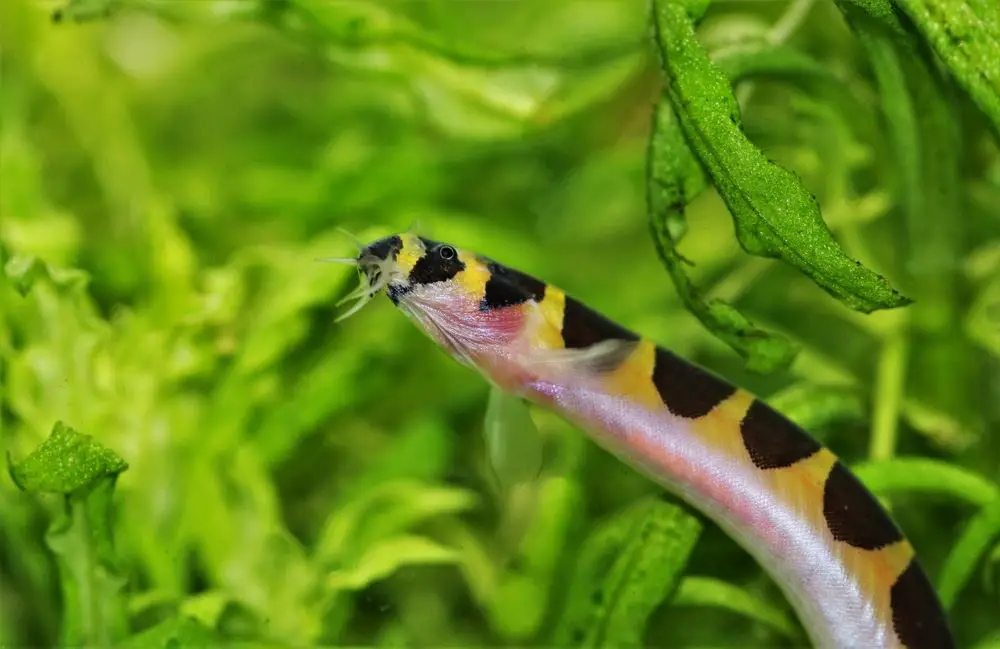
I’ll share my personal experiences, insights, and tips on keeping Kuhli Loach and shrimp together. Whether you’re a seasoned shrimp keeper or just starting, this guide will provide you with the knowledge and confidence to create a thriving underwater community.
So grab your nets, shrimpfam, and let’s dive into the world of Kuhli Loach and shrimp cohabitation!
What are the specific needs of Kuhli Loach in a shrimp tank?
Kuhli Loach, with their slender, eel-like bodies and fascinating nocturnal behavior, are a unique addition to a shrimp tank. However, their specific needs must be addressed to ensure a harmonious environment.
First and foremost, Kuhli Loach require a soft, sandy substrate. Their delicate barbels can be easily damaged by sharp gravel, so a smooth surface is essential. This allows them to burrow and explore without injury, a natural behavior that they exhibit in the wild.
Shelter is another vital need for Kuhli Loach. Providing hiding spots like caves, driftwood, or dense plantations will make them feel secure and reduce stress. These hiding spots also offer a place to rest during the day, as Kuhli Loach are primarily active at night.

Water parameters should be carefully monitored and maintained. Kuhli Loach thrive in slightly acidic to neutral pH levels (6.0 to 7.0) and prefer softer water. The temperature should be kept between 73°F to 86°F (23°C to 30°C), and regular water changes are necessary to keep the water clean and free from harmful toxins.
Diet is another consideration. Kuhli Loach are omnivorous and will eat a variety of foods, including sinking pellets, frozen or live worms, and other protein-rich foods. They are also known to scavenge, so they may consume leftover shrimp food, but a balanced diet tailored to their needs is essential for optimal health.
Lastly, Kuhli Loach are peaceful by nature but can be shy and reclusive. Keeping them in small groups of at least three will help them feel more comfortable and encourage natural behavior. It’s also essential to observe their interaction with shrimp and other tank inhabitants to ensure compatibility.
By understanding and catering to these specific needs, Kuhli Loach can thrive in a shrimp tank, adding diversity and interest to the underwater landscape. It’s a rewarding experience to watch them interact and explore, but careful planning and consideration are key to their well-being and the overall harmony of the tank.
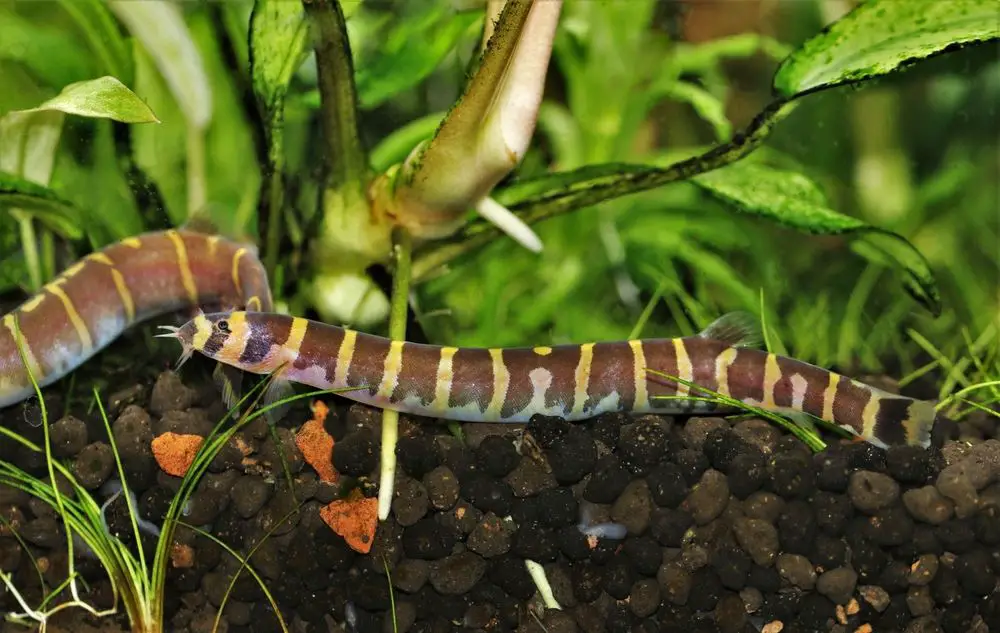
How can shrimp and Kuhli Loach coexist?
Firstly, it’s essential to recognize that Kuhli Loach are generally peaceful fish that are unlikely to prey on healthy adult shrimp. However, they might show interest in baby shrimp or weak individuals.
To minimize this risk, providing ample hiding spots for the shrimp is crucial. Dense plantations, rocks, and other structures will offer shelter and security for the shrimp, especially during the most vulnerable molting periods.
The tank’s size plays a significant role in ensuring harmony. A spacious environment allows both species to establish their territories and reduces resource competition. Adequate space also helps in maintaining water quality, as overcrowded tanks can lead to stress and health issues.
Feeding is another area that requires attention. While Kuhli Loach might scavenge leftover shrimp food, providing a balanced diet that caters to both species’ nutritional needs is essential.

The key to keeping any kind of fish with shrimp is to make sure you feed the fish enough that they don’t eat the shrimp, but at the same time you don’t overfeed the tank.
Sinking pellets and other protein-rich foods that reach the bottom of the tank will satisfy the Kuhli Loach, while shrimp-specific food will ensure the shrimp’s dietary requirements are met.
Observation and monitoring are vital in maintaining a conflict-free environment. Regularly watching the tank’s inhabitants’ behavior helps in early detection of any signs of stress or aggression. Prompt action can then be taken to address the issue, whether it’s adjusting the water parameters, rearranging the tank’s layout, or even separating incompatible individuals.
Lastly, introducing Kuhli Loach and shrimp to the tank in a thoughtful manner can set the stage for a peaceful coexistence. Acclimating them slowly and monitoring their initial interactions can prevent unnecessary stress and conflict.
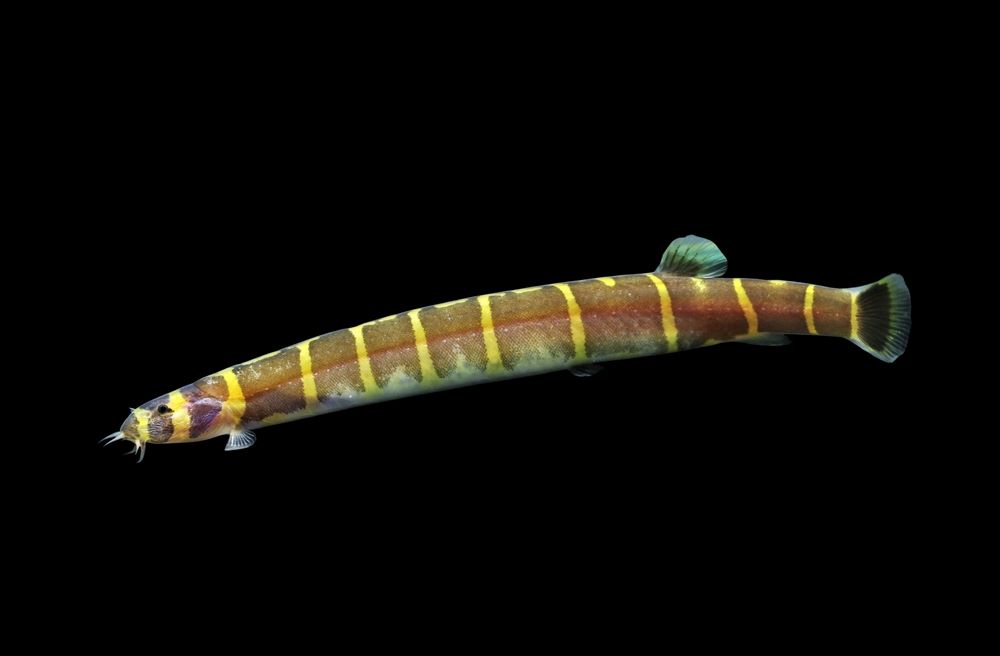
Shrimp and Kuhli Loach can coexist without conflict, but it requires a thoughtful approach considering both species’ unique needs and behaviors.
Shrimp keepers can enjoy the beauty and diversity that both shrimp and Kuhli Loach bring to the aquarium by creating a well-planned environment, providing proper nutrition, and maintaining vigilant observation.
What are the common mistakes when keeping Kuhli Loach with shrimp?
Keeping Kuhli Loach with shrimp is an exciting venture, but it has its pitfalls. Here are some common mistakes that can occur when attempting to house these two species together, and how to avoid them.
1. Inappropriate Substrate: Kuhli Loach are burrowers and require a soft, sandy substrate to protect their delicate barbels. Using gravel or other sharp materials can lead to injuries. Always choose a substrate that caters to the needs of both shrimp and Kuhli Loach.
2. Lack of Hiding Spots: Both shrimp and Kuhli Loach appreciate places to hide. Failing to provide enough hiding spots can lead to stress and unhealthy behavior. Incorporate plants, caves, and driftwood to create a natural and comforting environment.
3. Overcrowding the Tank: An overcrowded tank can lead to competition for resources and increased stress. Ensure that the tank is spacious enough to accommodate both species comfortably, allowing them to establish territories and interact without conflict.
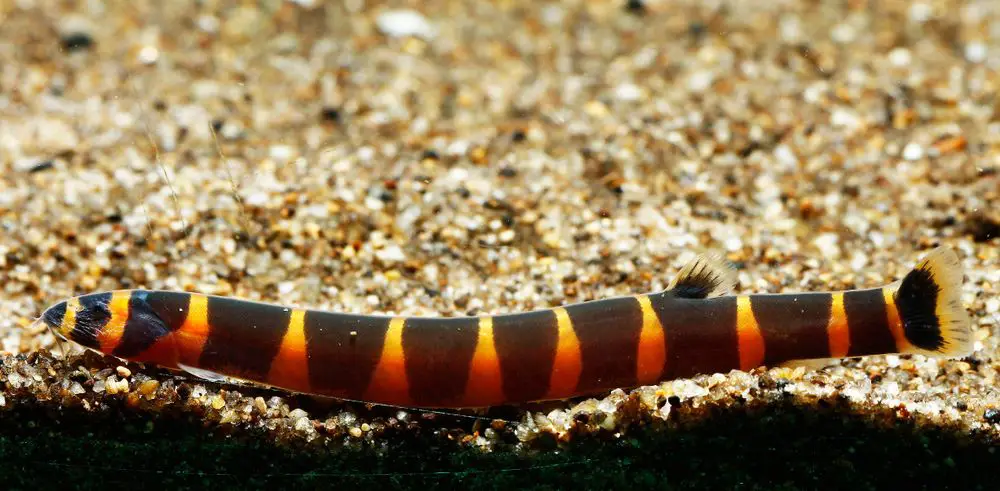
4. Inadequate Water Parameters: Kuhli Loach have specific water requirements that must be met. Ignoring these can lead to health problems. Regularly monitor and maintain the water parameters, including pH, temperature, and hardness, to suit both shrimp and Kuhli Loach.
5. Feeding Issues: Both species have different dietary needs, and failing to provide a balanced diet can lead to malnutrition. Offer a variety of foods that cater to both shrimp and Kuhli Loach, and avoid overfeeding, which can lead to water quality issues.
6. Ignoring Compatibility with Other Inhabitants: If there are other fish or invertebrates in the tank, their compatibility with both shrimp and Kuhli Loach must be considered. Aggressive or incompatible tank mates can disrupt the harmony and lead to unwanted conflicts.
7. Lack of Observation: Regular observation is key to understanding the dynamics of the tank and identifying any potential problems early on. Neglecting to monitor behavior and interactions can lead to unnoticed issues that may escalate into serious problems.
8. Impulsive Introduction: Introducing Kuhli Loach or shrimp impulsively without proper acclimation can cause stress and aggression. Take the time to introduce them slowly and thoughtfully to ensure a smooth transition.
How do we monitor and maintain the water parameters for Kuhli Loach and shrimp?
Monitoring and maintaining the water parameters in a tank housing both Kuhli Loach and shrimp is critical to ensuring their health and well-being. Here’s how to approach this vital task.
Understanding the Requirements: Kuhli Loach and shrimp have specific water requirements that must be understood and met. Kuhli Loach prefer slightly acidic to neutral pH levels (6.0 to 7.0), soft water, and temperatures between 73°F to 86°F (23°C to 30°C).
Shrimp also have particular needs depending on the species. Understanding these requirements is the first step in successful monitoring and maintenance.
Regular Testing: Regular testing of the water parameters is essential. Utilizing a reliable aquarium test kit, you should monitor pH, ammonia, nitrite, nitrate, hardness, and temperature. Weekly testing is good, but more frequent testing may be necessary if you notice any unusual behavior or signs of stress.

Water Changes: Regular water changes help maintain water quality. A common practice is to change 10% to 20% of the water weekly. However, the frequency and amount may vary depending on the tank’s size, the number of inhabitants, and the water quality. Always use dechlorinated water that matches the tank’s temperature and pH.
Filtration: A good filtration system is vital in maintaining water clarity and removing toxins. Ensure that the filter is appropriate for the tank’s size and that it doesn’t create strong currents that might disturb the Kuhli Loach or shrimp.
Avoiding Overfeeding: Overfeeding can lead to water quality issues, as uneaten food decomposes and releases harmful substances. Feed only what the inhabitants can consume within a few minutes and remove any leftover food promptly.
Observing Inhabitants: Regular observation of the Kuhli Loach, shrimp, and other tank inhabitants provides valuable insights into the water quality. Changes in behavior, appearance, or feeding habits may indicate underlying issues with the water parameters.
Using Water Conditioners: Water conditioners can help in maintaining the water parameters by neutralizing harmful substances like chlorine and chloramine. Follow the instructions on the product to use it effectively.
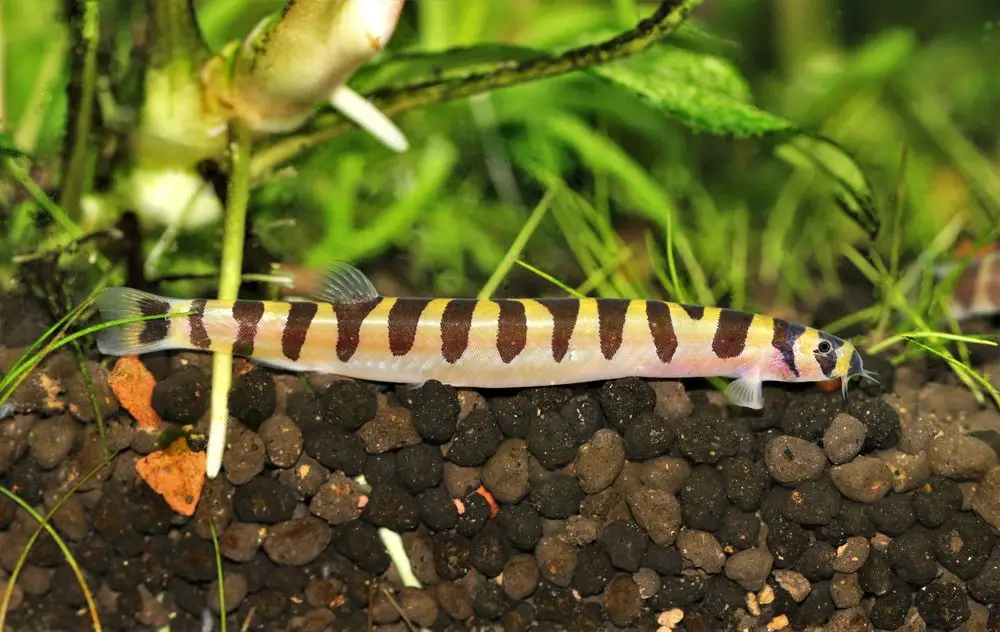
Avoiding Sudden Changes: Sudden changes in water parameters can cause stress and health problems. Any adjustments to the water parameters should be made gradually, allowing the inhabitants to acclimate to the new conditions.
Keeping Records: Maintaining a log of the water parameters, changes made, and observations can be a valuable tool in understanding trends and identifying potential issues early on.
Monitoring and maintaining the water parameters for Kuhli Loach and shrimp is a continuous process that requires attention, understanding, and care. By following these guidelines, shrimp keepers can create a stable and healthy environment that supports the unique needs of both species.
Warning: Undergravel Filters and Kuhli Loach
From personal experience, it’s essential to note that using an undergravel filter with Kuhli Loach can lead to unexpected challenges. Kuhli Loach, with their curious and burrowing nature, tend to find their way into the undergravel filter. Once inside, they may decide to take up residence there!
This behavior can create difficulties in maintaining the filter and may even pose risks to the Kuhli Loach themselves. Therefore, if you’re considering keeping Kuhli Loach in your shrimp tank, it’s advisable to opt for other types of filtration systems, if you wish to see them.
You have been warned
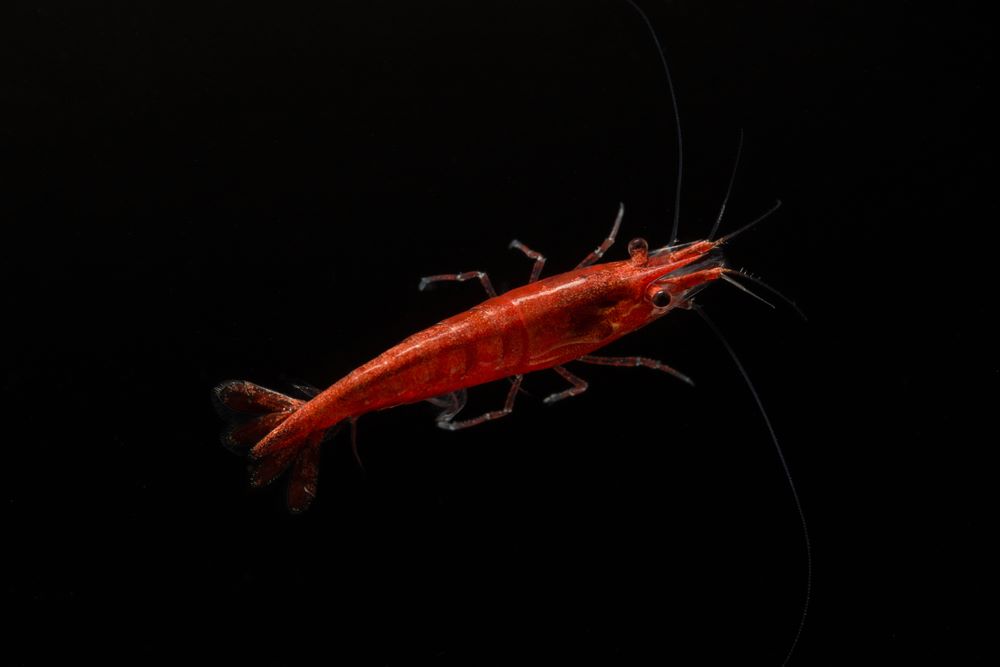
Conclusion: Can I keep Kuhli Loach and shrimp together?
In summary, keeping Kuhli Loach and shrimp together in an aquarium is not only possible but can be a rewarding and enriching experience. By understanding the specific needs of both species and carefully monitoring and maintaining the tank environment, shrimp keepers can create a harmonious underwater community. Attention to details like substrate, hiding spots, water parameters, feeding, and regular observation will ensure that both Kuhli Loach and shrimp thrive together.
Should you need any assistance or have questions about keeping Kuhli Loach and shrimp together, please don’t hesitate to reach out. If you can’t find me here, check out Aquarium Shrimp Keeping on Facebook.
Happy Kuhli Loach and Shrimp Keeping, shrimpfam!

FAQ Section
Q. Are kuhli loaches okay with shrimp?
A. Yes, kuhli loaches are generally okay with shrimp. They are peaceful fish that can coexist with shrimp, provided the right conditions and care are maintained. Proper tank setup, water parameters, and feeding practices will ensure a harmonious relationship between kuhli loaches and shrimp.
Q. What can a Kuhli Loach live with?
A. Kuhli Loach can live with a variety of tank mates, including shrimp, snails, and other peaceful fish. Compatibility depends on the specific needs and behaviors of the other inhabitants, so careful consideration and planning are essential.
Q. Will Kuhli Loach eat my snails?
A. Kuhli Loach are not known to eat healthy snails. They are primarily scavengers and omnivores, feeding on sinking pellets, worms, and other protein-rich foods. However, they might show interest in weak or dead snails.
Q. Do kuhli loaches need tank mates?
A. Kuhli Loach are social fish that prefer to be kept in small groups of at least three. While they don’t necessarily need other species as tank mates, having companions of their own kind helps them feel more comfortable and encourages natural behavior.
Q. Do kuhli loaches have a high bioload?
A. Kuhli Loach have a moderate bioload. Proper filtration, regular water changes, and avoiding overfeeding will help manage the bioload and maintain water quality.
Q. Do kuhli loaches need sand?
A. Yes, kuhli loaches need a soft, sandy substrate. Their delicate barbels can be easily damaged by sharp gravel, so a smooth surface is essential for their well-being. Sand allows them to burrow and explore without injury, mimicking their natural habitat.
